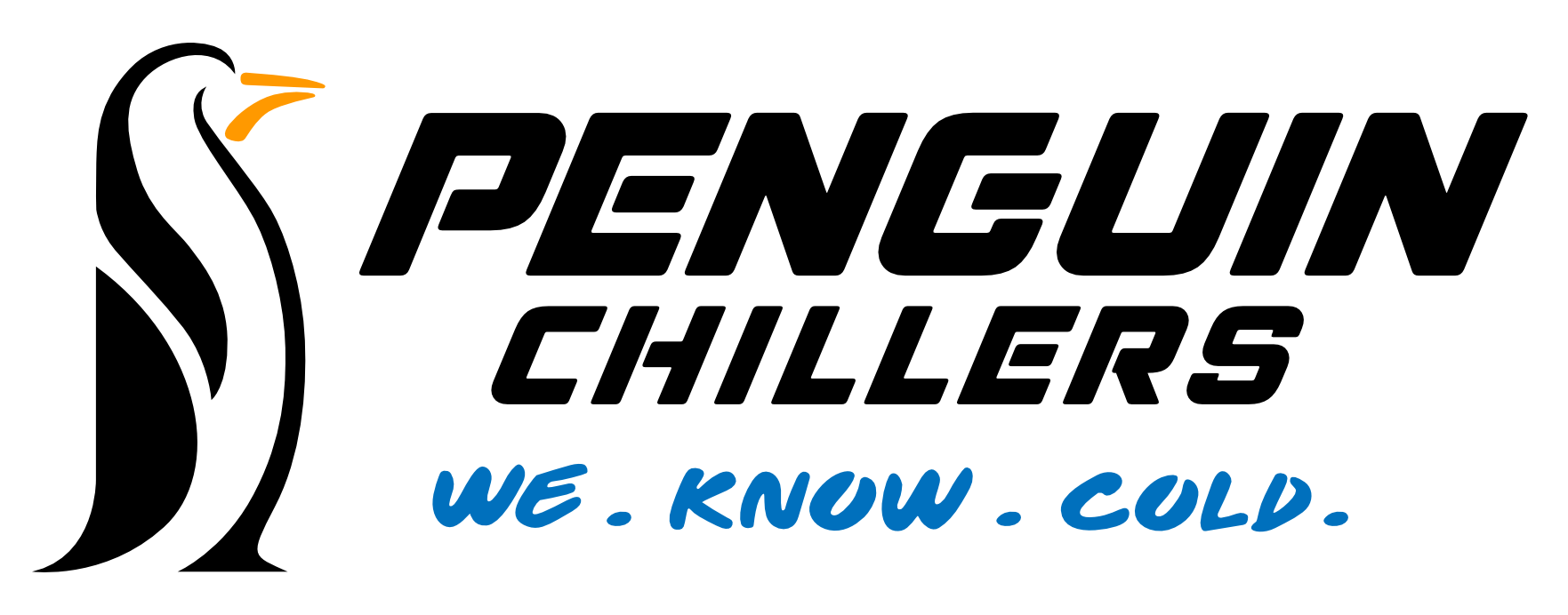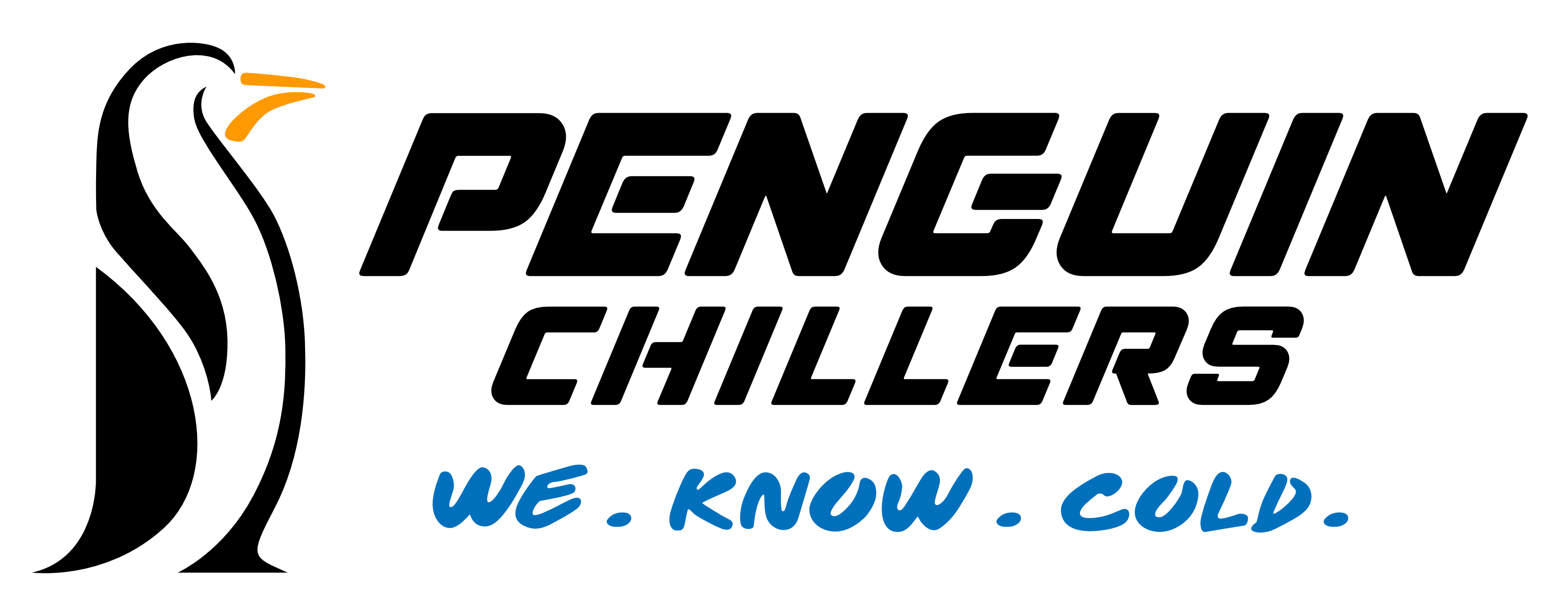FAQ
This is by far the most common question, and it is by far the hardest to answer. There is no blanket statement that answers this question.
Water Chillers: Penguin Chillers’ lowest recommended operating temperature is 37° Fahrenheit. Many customers still ask us if their unit can chill lower than 37° F. Our answer would be yes it can however, we strongly recommend not continuously running your water chiller lower than a set point of 37° F. On 5 gallons of water, we tested and reached temperatures down to 36° F. Keep in mind that the temperature your chiller is capable of reaching is completely dependent upon your chillers’ setup. Factors such as your goal temperature, the amount of liquid you’re cooling and its heat load plus the ambient conditions in which your chiller is being used are all variables that contribute directly to the temperature your unit will be able to achieve.
Glycol Chillers: Just like our water chillers, the lowest temperature your glycol chiller can reach is dependent upon several factors as well. Factors such as your goal temperature, the amount of liquid you’re cooling and its heat load, plus the ambient conditions in which your chiller is being used, are all variables that contribute directly to the temperature your unit will be able to achieve. Penguin Chillers’ lowest recommended operating temperature for a glycol unit is 5° F. During our testing, we were able to max out the glycol chiller at a temperature of negative 15° F with no heat load being applied at all. Again, we strongly recommend not continuously running your glycol chiller lower than a set point of 5° F.
Water Chillers: Penguin Chillers’ line of water chillers DO NOT contain built-in tanks or reservoirs. The internal piping and exchanger holds less than 1/2 gallon of water.
Glycol Chillers: Penguin Chillers’ standard line of glycol chillers DO have reservoirs that range from 1.25 to 3 gallons. Our Stainless Steel XL line of chillers offer reservoirs that range from 8 to 30 gallons and our commercial line has a 30 gallon reservoir. See individual product details for more information.
Penguin Chillers operate at a relatively quiet level. Our general customer feedback is, “the chiller runs much quieter than expected”. The DBA sound ratings for our chilling units are provided on each individual product page where available.
The function of a chiller, or any refrigeration unit, is to remove heat from one area and move it to another. A water chiller is removing heat from the liquid being chilled and disbursing it out into the air surrounding the unit. The amount of heat going out into the air is directly related to how much heat is needing to be removed from the liquid. As you can see, this question is difficult to directly answer.
Ventilation is required for proper heat transfer. A chiller cannot properly function if placed in a small enclosed space such as a cabinet or closet. Remember, the chiller is removing heat from the liquid being chilled and disbursing it out into the surrounding air. When the excesses heat can no longer be disbursed out into the air, the chiller is unable to provide any additional cooling. Proper ventilation also allows your chiller to run less, which actually makes it operate more efficiently.
Usually when this happens, your first thought is that the chiller isn’t working correctly. Most of the time that is actually not the case! So first we need to determine if it’s actually the chiller or something else that is causing your temperature issues. If your chiller is maintaining its set point and kicking off and on normally then it’s most likely not the chiller causing the issue. However, if the chiller is running constantly and still can not get down to your desired temperature, then it could be an issue with your chiller or set up. If this is the case you’ll want to contact our Penguin Chillers technical support team via email at support@penguinchillers.com. You can also reach us online, just click here for TECHNICAL SUPPORT.
If you’ve decided the chiller itself isn’t causing your temperature issues, then you may have a problem with your heat transfer. If enough heat is not being pulled out of your product (ex. Beer) fast enough and then properly transferred into the glycol, this could be your issue.
If your chillers glycol is too cold this can cause your product (ex. Beer) to freeze, forming an ice layer on the chillers coils. This added layer of ice on the chillers coils prevents proper heat transfer because the frozen layer of product (ex. Beer) contains tiny air bubbles that act as an insulator on the coils. This layer of ice insulates and slows down the heat transfer between your product and the glycol. To solve this product freezing problem, raise the temperature of your glycol several degrees above freezing for a few hours. This will ensure that any ice which formed on the chillers coils has melted and you can now safely take your glycol temperature back down to somewhere between 28 degrees fahrenheit and 30 degrees fahrenheit.
The most common operating temperature for a glycol chiller is 28 degrees fahrenheit. Going any colder will likely result in an icing of your product (ex Beer). If 28 degrees Fahrenheit is still too cold for your set up, you’ll want to raise your glycols temperature to somewhere between 30 degrees Fahrenheit and 32 degrees Fahrenheit. Other factors can come into play, like the alcohol content of your product. This can dictate a slightly higher glycol temp setting. If testing out your new fermenter with water only, you will need to use glycol temperatures of 33 degrees fahrenheit to 34 degrees fahrenheit in order to avoid icing.
If none of the above scenarios seem to be your problem perhaps your chillers glycol levels are simply too low or you’re using an incorrect glycol flow rate. You could also be receiving an incorrect glycol temperature reading and need to reset your units controller by unplugging your chiller for 30 seconds and then powering it back up. We can walk you through testing these issues if you contact our Penguin Chillers Technical Support Team by email at: Support@PenguinChillers.com. You can also reach us online, just click here for TECHNICAL SUPPORT.
Apart from the Cold Therapy Chiller, Penguin Chillers do not have built in pumps. Because our chillers can be used in such a wide variety of configurations, it is up to the customer to provide the number of pumps needed for their chilling project. Penguin Chillers offers a wide variety of pumps for both Water and Glycol Chillers. Click Here for Pumps.
Water chillers: We provide a recommended pump size to ensure the chiller has enough flow to keep water from freezing in the unit and not too much flow which can create an over pressurization in the chiller. We typically recommend using a 500 gph to 1,800 gph pump in order to achieve a minimum measurable flow of at least 250 gph. A pump needs to be sized to compensate for loss of flow due to pipe length, fittings, and head height. A common misconception is that the size of a pump determines how efficiently the chiller will run. With the exception of a diaphragm pump, most pumps that can provide the appropriate flow rate needed should be suitable for use. Typically, submersible pumps are selected and used for their simplicity. Penguin Chillers offers a full line of submersible Danner water pumps that range in size from 500 gph up to 3600 gph. Click to view our complete line of WATER PUMPS.
Glycol Chillers: Because space is limited in the glycol bath, sourcing different pumps to fit may be difficult due to the size restrictions. We recommend two specific lines of glycol pumps which work well with Penguin Chillers Glycol units. Click to view our line of GLYCOL PUMPS.
Commercial Water Chillers: We recommend maintaining a measurable flow rate of 1,200 gph to 2,500 gph through our chillers. Due to the variety of applications, the pump size may vary considerably to achieve this flow rate.
*Standard Pump – Your pump is fully submersible and should be placed directly into the chillers’ reservoir. This pump should not be continuously running 24/7.
*XL Pump – 2 Fittings are provided with your pump. Select proper fitting for your tubing size and place it on the “OUTLET” side of pump. Only 1 fitting needs to be used. DO NOT use fitting on the “INLET” side of your pump. Your pump is fully submersible and should be placed directly into the chillers reservoir. This pump should not be continuously running 24/7.
Click here to see our line of Glycol Pumps offered by Penguin Chillers.
Penguin Chillers line of both Water and Glycol Chilling units DO NOT offer heating capabilities. Our chillers specialize in quiet efficient cooling because WE KNOW COLD!
Our cold therapy chillers can be used indoors and outdoors, except in freezing conditions. Our standard line of Penguin Chillers are not intended for outdoor use. Our Penguin Chillers Commercial Units are ready to be used indoors or outdoors with no worries regarding the elements.
All Penguin Chillers brand Chillers are American made and manufactured in the United States. Our Chillers all come with a Free 1 year Warranty. WE STAND BEHIND OUR PRODUCTS and are here to offer you continued support throughout the life of your unit. We also offer an Extended Warranty Program as well. Use the link for more information. Feel free to contact our Penguin Chillers Technical Support Team anytime by email at: Support@PenguinChillers.com. You can also reach us online, just click here for TECHNICAL SUPPORT.
Controller Guides
Resources









